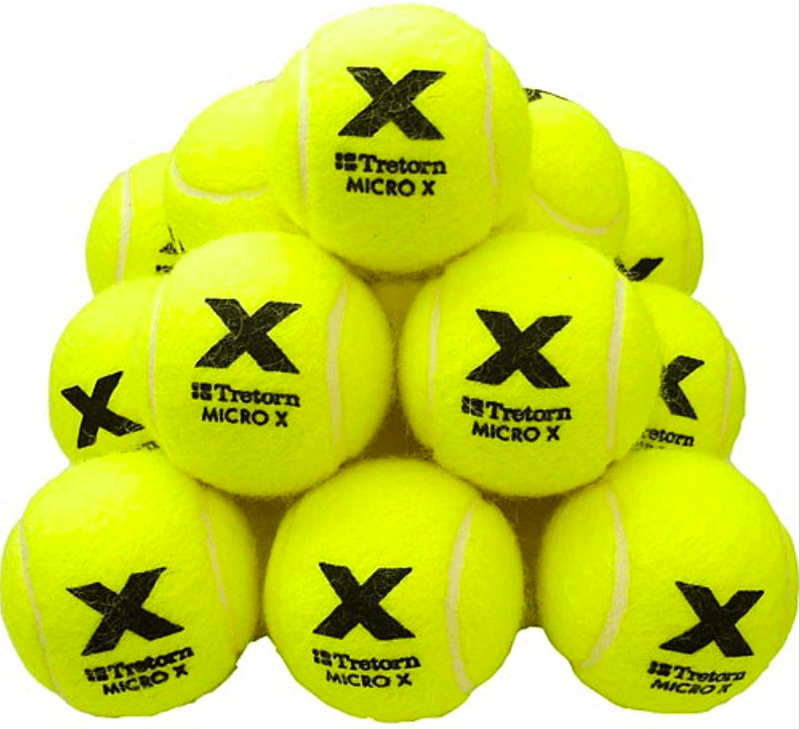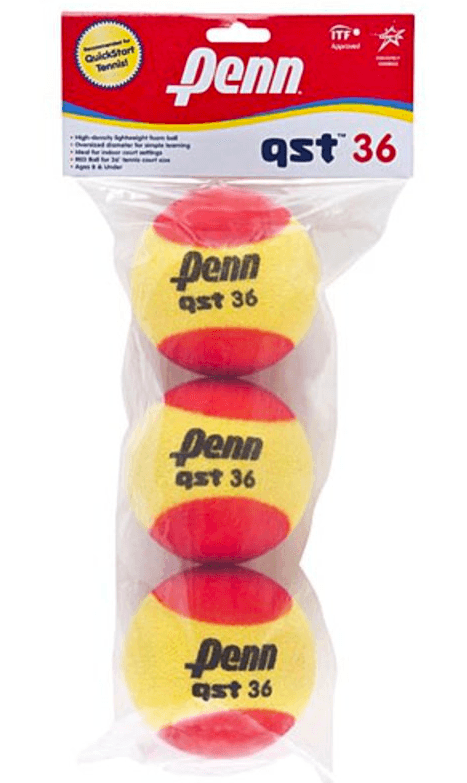Tennis Ball Buying Guide

Choosing a Tennis Ball
Maybe more than any other sport, tennis accessories can make or break your playing. Whether you are a hardened pro or you’ve yet to pick up a racquet, choosing a tennis ball that fits your needs is an essential part of the game. To a beginner they may all look the same, but there are dozens of distinctions between various tennis balls -- and over 200 brands approved by the International Tennis Federation -- so it can be daunting to figure out the best tennis balls for you.
Does the color matter? What does altitude have to do with tennis? What are the fastest tennis balls? Elbow ease tennis balls? If any of these questions have crossed your mind when choosing a tennis ball, you are in the right place. At Midwest Racquet Sports, you’ll find an assortment of practice tennis balls, kids’ tennis balls, tournament tennis balls, elbow ease tennis balls, and more from top brands like Wilson, Dunlop, Penn, Wilson, and Babolat. We will sort through it all so you’ll make the right choice today and in the future!
When it comes to the types of tennis balls, there’s no shortage of levels, stages, colors, and other classifications. So what do they all mean? Let’s start with the basics of choosing a tennis ball.
Best Tennis Balls for You: Recreational, Championship, or Professional?
There are three basic quality levels of tennis balls produced by the top manufacturers: recreational level, championship level, and professional level. The beginner tennis ball is considered recreational and are intended to be used as practice balls in a ball machine or hopper when you're fine-tuning your strokes. Recreational balls should be solely used for practice purposes and not match play as many leagues do not allow you to play matches with these types of tennis balls. Championship level balls are a step up and can be used for league match play as they have much more bounce and feel to them for intermediate players. The most premier type of tennis ball is the professional level and these are manufactured with the highest quality of materials for each manufacturer. Professional level tennis balls incorporate more technology than recreational and championship level balls to allow for longer playability as these are often times used on the ATP/WTA pro tour so you can definitely expect to get both performance and durability out of these for more advanced players. Below you will find a few official tennis balls used at tournaments on the pro tour at the Australian Open, US Open, Roland Garros and a few smaller ATP 250 and 500's.

Types of Tennis Balls: Pressureless or Pressurized?
Another important thing to keep an eye out for when selecting tennis balls is the distinction between pressurized and pressureless tennis balls.
Pressureless balls are often used for beginners, practice, or recreational play. They achieve bounce from the rubber shell structure and not from air on the inside. Because of this, pressureless balls won’t lose their bounce like standard balls -- they actually gain bounce over time as the outer felt begins to fade. Many players may enjoy the longevity of pressureless tennis balls, but others consider them heavier and harder to play.
Pressurized balls are your tournament tennis balls used by the pros and are much more common. They utilize internal air pressure that gives greater bounce, speed, and spin fresh out of the can but which quickly fades over time. A study found that the lifespan of most pressurized tour tennis balls is at most two weeks, and many are used for only a single match.
Regular Duty vs. Extra Duty
When you are on the lookout for new tennis balls, the type of court you play on definitely plays a role in the type of ball your should play with.
Regular Duty
If you frequent clay or indoor courts, you will want regular duty tennis balls. Regular duty tennis balls have thinner felt that lessens the amount of clay absorbed on impact so the balls do not get heavy by collecting moisture from the clay. The felt on the ball is woven tighter together around the core of the ball and this prevents the ball from puffing up and extending its life. If you use an extra duty ball on a clay court, the moisture from the clay will penetrate the felt and will down much quicker.
If you prefer to play on outdoor hard courts or grass, extra duty felt will hold up better on the more demanding hard courts and grass surfaces. The felt is much thicker on extra duty, hence the 'extra', and is woven looser than regular duty balls as the felt needs to wear down less quickly. If you use a regular duty ball on an outdoor hard court, the ball will be less durable and wear down fairly quickly by having a flat feeling.
High Altitude
When selecting tennis balls, it is important to keep in mind what the elevation is of where you are playing. Playing at high altitudes can cause pressurized tennis balls to bounce higher and travel faster, which is problematic for all types of players. The ITF considers “high altitude” to be 4,000 feet or higher. If you’re playing at or above this altitude, you will want to invest in specialized high-altitude tennis balls that are created to minimize these issues and promote a more normal feel on the court as the thin air in high altitudes impacts that bounce of the ball.

For Beginners and Kids
If you are just starting out or you’re introducing your kids to the sport, there are a variety of beginner tennis balls that are specially designed for slower play. The fastest tennis balls may suit the pros, but slower-moving foam tennis balls are great for teaching and training, or you could try out one of three stages of beginner balls:
Stage 3 (Red): These beginner balls are created for young children (typically 10 years or younger) to help build skills, develop proper movement, fine-tune coordination, and boost confidence. Approved for play on a 36 foot court format.
Stage 2 (Orange): These are reduced flight balls and are great for use on reduced length 60 foot courts. While more advanced than Stage 3, these will still slow down the game.
Stage 1 (Green): The last stage before a tournament tennis ball, these feature a slightly lower bounce and help beginners use proper technique. Typically used on a full size 78 foot length tennis court.
Specialty Tennis Balls
Choosing a tennis ball is much more complicated than it looks, and on top of all the standard distinctions you’ll also find a variety of specialty tennis balls on the market. From elbow ease tennis balls, which are designed reduce arm impact, to longer-lasting core technology that helps promote bounce longevity, there are all types of tennis balls to explore for every type of player.
Conclusion
Selecting tennis balls is not as easy as it looks! Finding the best tennis balls for your skill set, court choice, and location can sometimes seem complicated, but soon it will be second nature. Whether you prefer the faster playing balls, practice/recreational balls, or tour tennis balls, there’s no shortage of choices out there.
